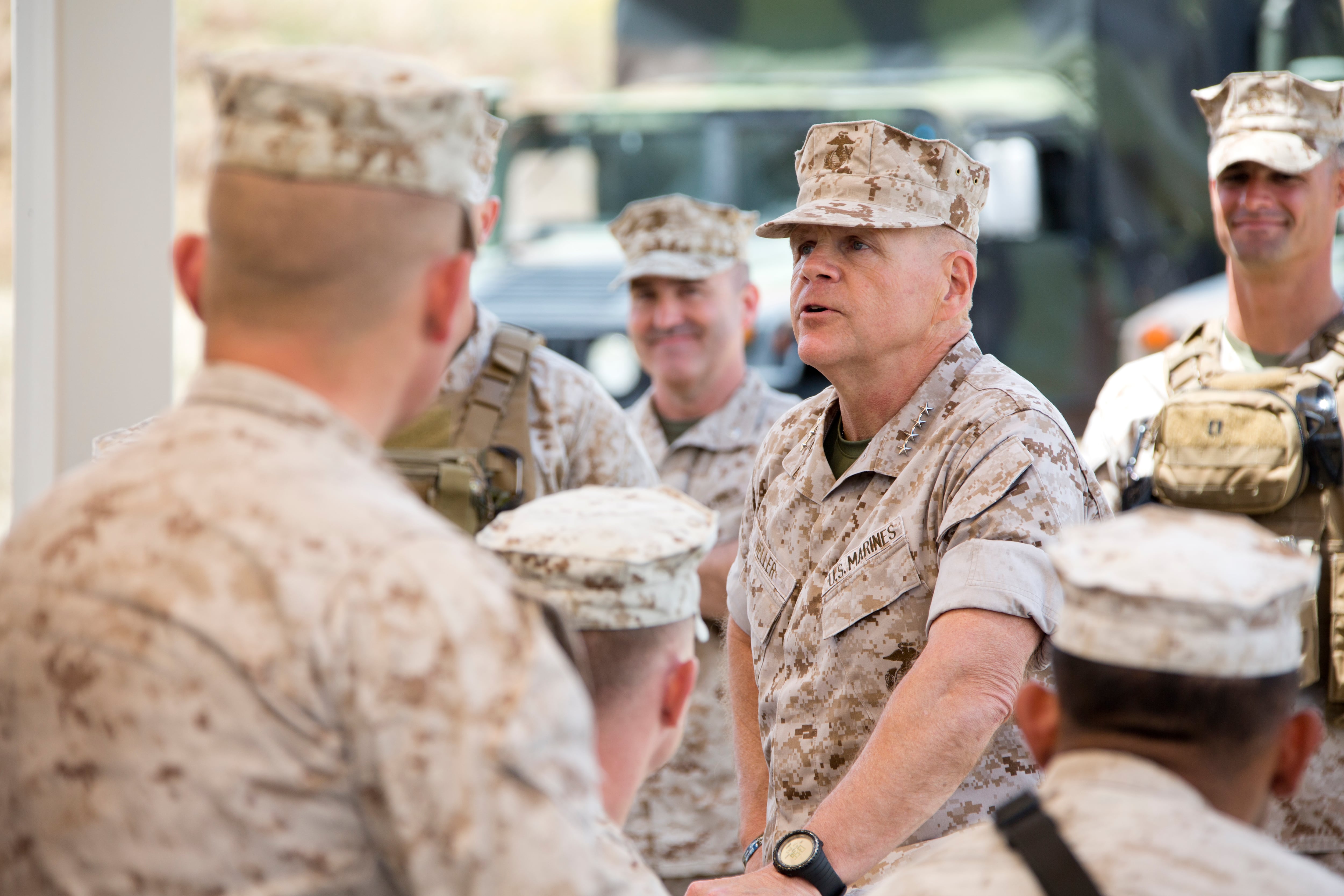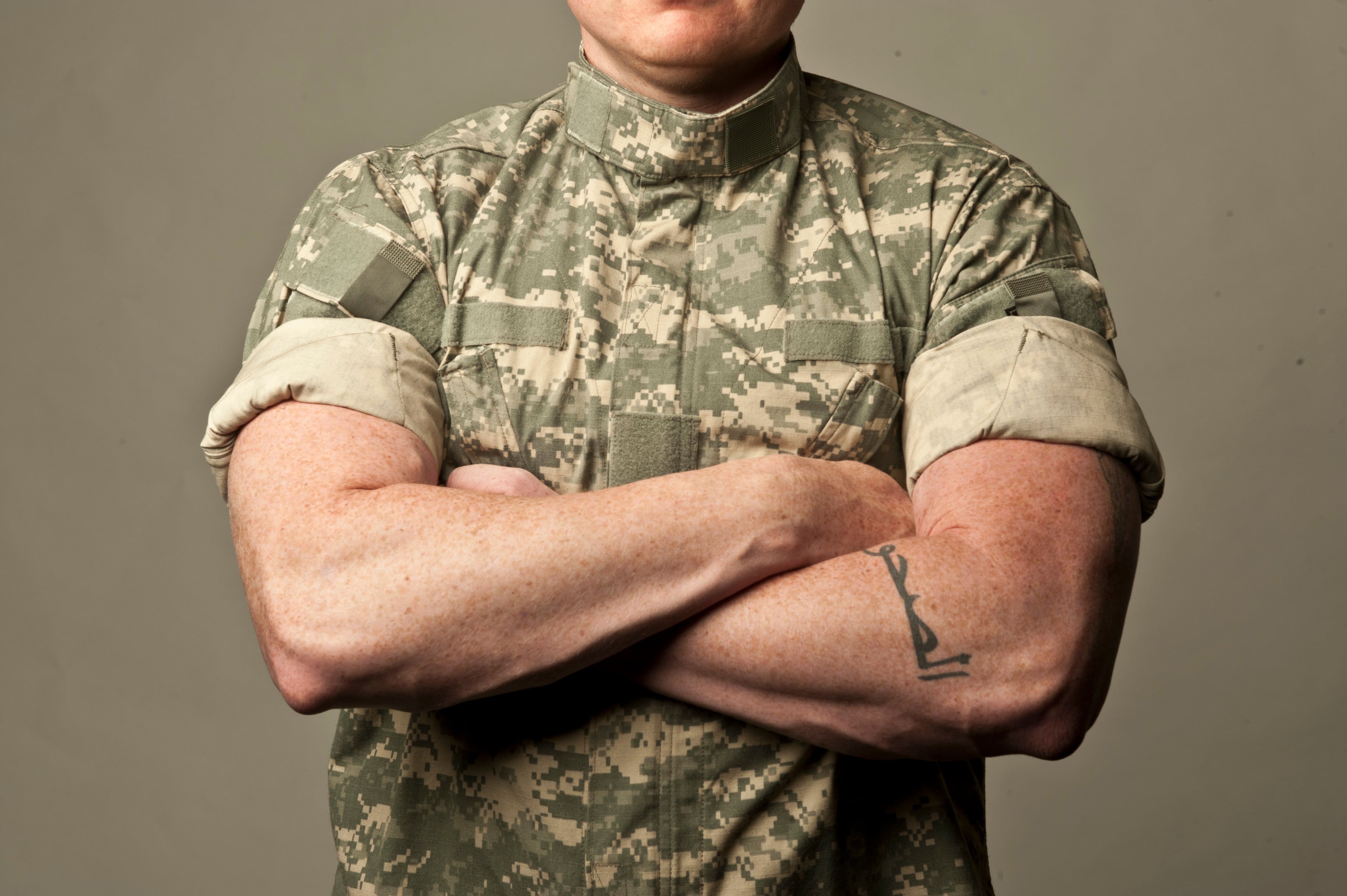This story has been updated. It was first published on June 16, 2016 at 2:12 p.m. EST.
You've asked for it, and the Army has heard you.
Army Chief of Staff Gen. Mark Milley on Thursday announced during a trip to Fort Hood, Texas, that soldiers will be able to roll the sleeves on the Army Combat Uniform.
But don't start rolling your sleeves just yet, Army officials said. Milley is calling for a 10-day pilot at Fort Hood with the intention of continuing it for the rest of the Army.
Milley's announcement is so popular that soldiers at Fort Hood are already rolling their sleeves, Army officials said.
"Feedback from soldiers resulted in us wanting to do a trial over the next 10 days to see the feasibility of updating [Army Regulation] 670-1 and incorporating these changes in the future to give commanders flexibility in wear based upon their unit's mission," said Lt. Col. Jerry Pionk, an Army spokesman.
The issue of rolled sleeves — the Marine Corps allows sleeve-rolling in the summer — has been a hot topic among soldiers for years. In February, when Army Times asked readers what they wanted Sergeant Major of the Army Dan Dailey to tackle next, several wrote in asking for permission to roll their sleeves in the summer.
In 2014, as an April Fool's joke, the website ArmyReenlistment.com announced that the Army was going to allow for rolled sleeves.
Soldiers have not been allowed to roll up their sleeves since the Army Combat Uniform replaced the Battle Dress Uniform in 2005. The Army's official explanation was that the top was made to protect soldiers' forearms from the sun, insects and other elements, and it's not designed to be cuffed.
The Army Combat Uniform also was never designed to have rolled sleeves, officials have said. The way it's designed, with Velcro pockets and a pen pocket on the left cuff, makes it difficult to roll the sleeves.
As the Army hashes out details of how to bring back sleeve-rolling, it is, for now, not going to require soldiers to roll their sleeves with the camouflage facing out, which was how it was done with the old Battle Dress Uniform.
"For now, sleeves will be rolled with the inside facing out, similar to the Marines," Pionk said. "Future updates to AR 670-1, if any, will further specify the exact manner of how the sleeves can be rolled."
More information and details will be released soon, Army officials said.
Marine Corps regulations call for sleeves to be rolled with the inside out, forming a roll of about three inches wide and ending at a point about two inches above the elbow. In the summer, the Marine desert combat utility uniform with sleeves rolled up is to be worn as the uniform of the day,

Commandant of the Marine Corps Gen. Robert Neller, shown here with rolled sleeves. The Marine Corps permits rolled sleeves in the summer months.
Photo Credit: Staff Sgt. Gabriela Garcia/Marine Corps
The debate about rolled sleeves has been around for years, with many in favor of the look.
Army historians have said Army regulations did not widely address the issue of rolled sleeves until 1969, even though soldiers are pictured with them from World War II through the Vietnam War.
Army historian Luther Hanson, of the Army Quartermaster Museum on Fort Lee, Virginia, researched the issue after receiving an Army Times request back in 2014. He found in 1966 that local regulations in Vietnam authorized commanders to allow "cuffed sleeves." In 1969, appearance regulations dictated that sleeves not be rolled or shortened. Exceptions were permitted "only to prevent heat injury."
Sleeve-rolling is also a hot topic among Marines, who were incensed in 2011 when then-Commandant Gen. Jim Amos banned the practice. The ban was reversed in February 2014, allowing for "sun's out, guns out" for Marines across the force.
"It was a visceral thing for Marines," Amos said at the time. "And there was only one person who could change it. And it was me."
The Navy and the Air Force also allow for rolled sleeves.
In the Navy, when authorized, the sleeves of the Navy working uniform should be rolled with the cuff right-side out. The roll should form a three-inch wide band covered by the cuff of the shirt, which means the camouflage will be facing out, and end about two inches above the elbow. Rolling the sleeves this way presents a short-sleeve appearance and facilitates quick unrolling and fastening during emergent situations, according to information from the Navy.
Air Force instructions are similar, calling for the cuffs of the sleeves to remain visible. Once rolled, the sleeve will at, or within one inch of, the forearm when the arm is bent at a 90-degree angle. If an airman's sleeves are rolled up, the chevrons on their rank insignia, if any, do not need to be fully visible. The rank must still be distinguishable.
Staff writer Joe Gould contributed to this report.
Michelle Tan is the editor of Army Times and Air Force Times. She has covered the military for Military Times since 2005, and has embedded with U.S. troops in Iraq, Afghanistan, Kuwait, Haiti, Gabon and the Horn of Africa.




